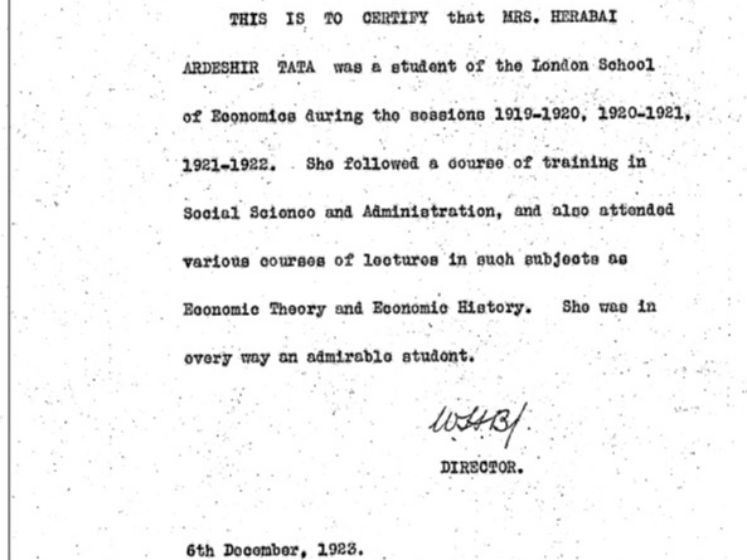
Mother and daughter Herabai (student 1919-22) and Mithan Tata (MSc Economics 1922) studied at LSE between 1919 and 1922. Herabai was Honorary Secretary of the Women’s Indian Association and both women were campaigners for women's suffrage. Mithan went on to become India's first female Professor of Law.
After meeting active campaigner in the British suffrage movement Princess Sophia Duleep Singh, on holiday in Kashmir in 1911, both Herabai and Mithan took up the cause of women’s votes in India. In 1915 Herabai became Honorary Secretary of the Women’s Indian Association. They travelled to Britain to present a memorandum on women’s franchise, while the 1919 Government of India Bill was under discussion, and then toured the country talking to suffrage societies before beginning their studies at LSE.
During her time at LSE, Mithan was one of two students introduced to George V and Queen Mary at the laying of the foundation stone of the Old Building. In 1920 she was admitted to Lincoln’s Inn, only one year after the 1919 Sex Disqualification (Removal) Act had allowed women to enter public office. On her return to India in 1924 Mithan practised at the Mumbai High Court and became Professor of Law at the Government Law College in Mumbai – the first woman Professor of Law in India.
A recent discovery among the student files reveals that Herabai also registered as a student at LSE. The file indicates that between 1919 and 1922 Herabai followed the Social Science Course and took classes in economics. However Herabai had not sat any exams and on her departure in 1923 she asked for a certificate to prove she had attended the courses. The certificate, signed by LSE Director, William Beveridge, concludes: “She was in every way an admirable student”.
Read more
A mother and daughter at LSE - Herabai and Mithan Tata by Sue Donnelly on the LSE History Blog